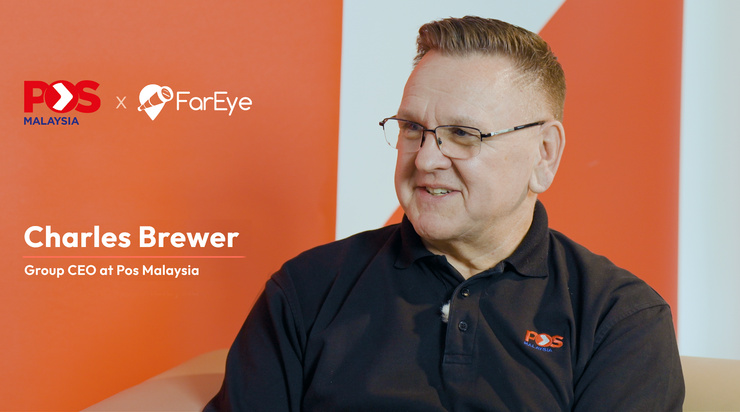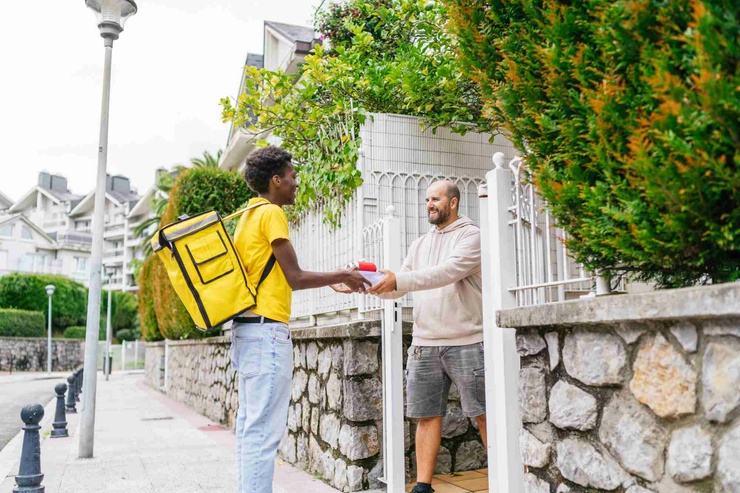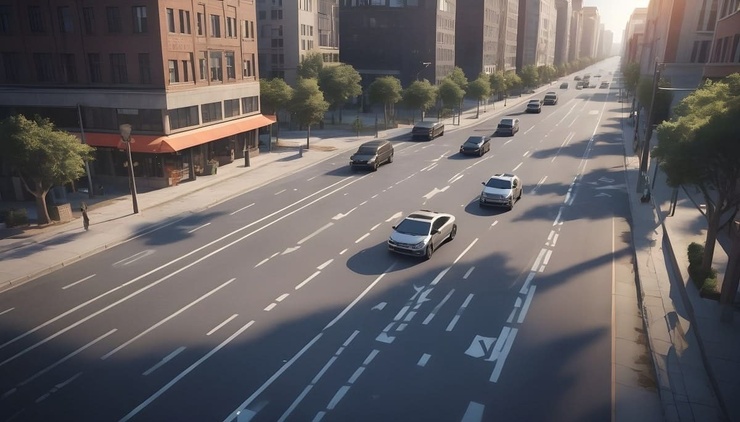- Last-Mile
Last-Mile Transportation: Key to Efficient Deliveries
Last mile transportation serves as the crucial link in the logistics chain. Often the most complex and costly segment of supply chain it accounts for a significant portion of overall delivery expenses. As consumer expectations for quick and reliable delivery continue to rise businesses must prioritize optimizing last mile logistics to enhance the customer experience. A seamless delivery process increases trust and encourages repeat business making it essential for long term success in a competitive market.
Efficient last mile transportation greatly affects customer satisfaction. Research shows that many consumers stop shopping from a brand after just one late delivery. Excelling in this final stretch can be a game changer. Companies that invest in innovative solutions—such as route optimization and real time tracking can reduce costs while improving delivery speed and accuracy.
Trends in Last Mile Transportation
- Rise of e-commerce: Growth of e-commerce has transformed last mile transportation. As more consumers shop online demand for efficient and timely delivery services has increased. Businesses are now focusing on optimizing their last mile logistics to meet the consumer expectations for speedier deliveries by using advanced technologies to streamline operations and reduce costs.
- Shift towards sustainability: Sustainability has become a key trend in last mile transportation driven by growing environmental concerns and consumer demand for eco-friendly practices. Businesses are exploring alternative delivery methods such as electric vehicles and drones to reduce their carbon footprint. This shift is helping improve the brand reputation and customer loyalty while addressing environmental issues.
- Technological advancements: Tech innovations like IoT sensors and AI analytics are transforming last mile delivery with real time tracking and dynamic route optimization. This enhances delivery efficiency, reduces costs and increases customer satisfaction. Automation and robotics speed up deliveries, meet rising customer expectations and cut labor costs.
- Hybrid fleet management: Many businesses are adopting hybrid fleet management systems that combine their own vehicles with third party contractors and freelance drivers. This enables businesses to scale their fleet size based on demand fluctuations while retaining control over the delivery operations. Hybrid models help reduce costs and improve service levels.
- Increased focus on customer experience: As consumer expectations rise businesses are prioritizing customer experience in last mile delivery. This includes offering flexible delivery options such as same day or next day and order to door tracking. Businesses are investing in technologies that offer timely delivery updates.
- Data driven decision making: Availability of vast amount of data is empowering businesses to make better decisions and enhance the operational efficiency. By analyzing customer preferences, traffic patterns and delivery performance businesses can optimize their operations and anticipate potential issues.
Major Challenges in Last Mile Transportation
- Rising customer expectations: Consumers now need not only speed but also reliability and flexibility in delivery options. They expect real time tracking, accurate delivery time estimate and ability to change delivery details post purchase. A key challenge for the logistics companies is meeting these expectations without increasing costs.
- Route optimization: Optimizing efficient delivery routes for multiple deliveries is a complex task. It requires advanced technology and algorithms to analyze various factors such as traffic patterns, delivery windows and driver capacities. Inefficient routing can result in longer delivery times and higher fuel consumption.
- Cost: Last mile delivery is often the most expensive segment of logistics chain driven by factors such as rising fuel prices, vehicle maintenance costs and labor expenses. Balancing cost while ensuring efficiency and maintaining high customer satisfaction is a huge challenge for many businesses.
- Environmental impact: The need for greener delivery solutions is becoming increasingly important as last mile transportation is a major contributor to carbon emissions. Businesses need to upgrade from the traditional delivery methods and adopt sustainable practices to meet the regulations and consumer demand for eco-friendly options.
- Technology integration: Implementing new technologies such as real time tracking and route optimization software often faces resistance due to costs, training and integration challenges. To overcome these hurdles businesses should involve stakeholders early, clearly communicate benefits, provide thorough training and create a robust integration plan.
- Compliance with regulations: Varying regional regulations regarding transportation and delivery can create a complex landscape for logistics companies. Handling the regulations and ensuring compliance adds complexity to last mile operations specially for businesses operating in various regions.
- Driver retention and training: High turnover rate among delivery drivers is another major challenge for logistics companies. Retaining skilled drivers and providing them with training in customer service and technology usage is essential for maintaining service quality and operational efficiency.
- Capacity limitations: During peak seasons such as holidays logistics companies often struggle to handle increased delivery volumes without compromising service quality. Managing the capacity and ensuring timely deliveries needs careful planning and resource allocation.
- Security and theft: Ensuring the security of goods during the last mile delivery process is critical particularly for high value items. Risk of theft and damage during transit can cause financial losses and hurt customer trust making security a key concern for logistics providers.
- Gaps in communication: Effective communication between various stakeholders in delivery process—such as warehouses, drivers and customers can be challenging. Gaps in communication can lead to delays, misunderstandings and errors.
How FarEye Addresses Last Mile Transportation Challenges?
FarEye's last mile delivery platform effectively manages several critical challenges faced by the businesses in the logistics sector. Let’s understand how:
- Inefficient route planning: Manual route planning can be inefficient and complex often leading to delays and a poor customer experience. FarEye platform helps address this by using advanced algorithms to optimize routes considering factors such as traffic conditions, delivery sequence and priority. Intelligent clustering of orders ensures efficient deliveries and better adherence to service level agreements.
- Failed or delayed deliveries: It is one major challenge that can significantly impact brand reputation and increase operational costs. FarEye enhances delivery reliability by providing real time predictive alerts regarding potential delays, vehicle breakdowns and idle time. This helps the drivers stay on track and meet their targets.
- Lack of end-to-end visibility: Many businesses struggle to provide real time order visibility often relying on basic tracking codes. FarEye's platform offers order to door visibility allowing the customers to receive real time updates about their order’s delivery journey. This helps reduce the number of WISMO inquiries and enhances overall customer experience.
- Rising delivery costs: Last mile delivery has a major cost for businesses. They must manage the expenses while meeting the customer expectations for fast and free shipping. FarEye’s platform helps reduce these costs by optimizing routes and improving operational efficiency. Dynamic route planning and real time tracking help reduce costs enabling businesses to maintain competitive pricing while maintaining service quality.
Role of Automation in Last Mile Transportation
Automation is transforming last mile transportation by reducing manual errors and enhancing efficiency. Automated systems for route planning, dispatching and customer communication improve accuracy and minimize mistakes. Real time data helps optimize routes based on traffic patterns and customer preferences ensuring timely deliveries and better customer satisfaction.
Businesses using FarEye have reported upto a 20% reduction in delivery costs due to improved operational efficiency. eCommerce brands using automated sorting and loading systems demonstrate tangible benefits of automation in minimizing errors and enhancing overall service quality in last mile transportation.
Sustainability in Last Mile Transportation
Rising demand for last mile delivery has significantly increased the carbon emissions making sustainability a pressing concern. Last mile logistics contribute approximately 30% of carbon dioxide emissions in the transportation sector, driven by factors such as the inefficient vehicle use, low delivery consolidation and high rate of product returns.
With the growth of e-commerce, the World Economic Forum predicts a 78% rise in last mile demand by 2030. Businesses must balance customer experience with sustainability adopting eco-friendly practices to meet regulations and expectations.
To reduce the carbon footprint of last mile delivery innovative solutions like zero emission fleets and drone deliveries are being explored. The use of micro-fulfillment centers has shown to decrease vehicle related emissions by 16% to 26%.
Conclusion
The evolution of last mile transportation is reshaping the logistics landscape. With the growth of e-commerce businesses must meet rising demands for fast, reliable deliveries. Automation, real time tracking and sustainability are now crucial in last mile logistics. Businesses are using hybrid fleets and data analytics to optimize routes and boost efficiency.
The future of last mile transportation will focus on more sustainable and efficient delivery methods. Stricter regulations will promote use of electric vehicles and automated delivery solutions. Collaboration among stakeholders will be crucial to develop a sustainable last mile ecosystem that balances operational and environmental goals.

Komal Puri is a seasoned professional in the logistics and supply chain industry. As the AVP of Marketing and a subject matter expert at FarEye, she has been instrumental in shaping the industry narrative for the past decade. Her expertise and insights have earned her numerous awards and recognition. Komal’s writings reflect her deep understanding of the industry, offering valuable insights and thought leadership.
Let's Talk to Our Experts and Optimize Your Deliveries Today!
An expert from our team will reach out within 24 hours



